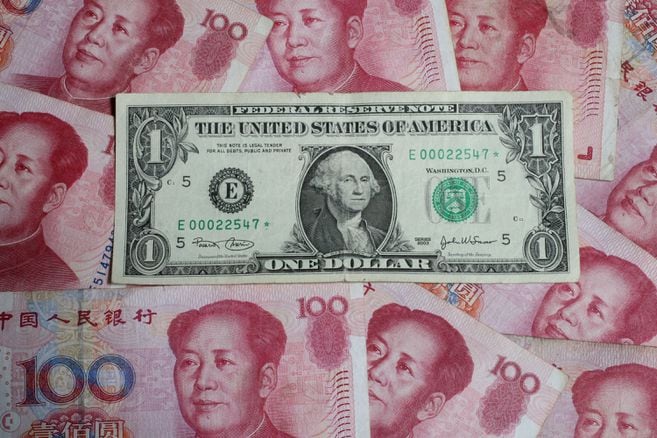
The fall of the dollar as a world reserve currency is a fact that has been speculated on for years, and the yuan has been strengthening.
China’s rapid recovery from the effects of the pandemic once again fueled the ongoing debate over how long the dominance the dollar has held in world markets for half a century may persist.
The difficulty the United States has had in controlling the coronavirus and reactivating its economy contrasts sharply with the Asian nation, where growth has picked up. This divergence – which led the dollar to its worst performance since 2017 as the yuan advanced – strengthened China’s momentum against the dollar’s hegemony, with investors migrating to onshore assets, the use of the renminbi for trade and even with a new look as a reserve currency.
The fall of the dollar as a world reserve currency is a fact that has been speculated on for years. Before the yuan, all the fuss was about the euro as the successor to the dollar. However, nothing managed to impact the two forces that underpin the supremacy of the dollar: the role of the US as a driver of global growth and a first-choice refuge for investors during crises.
But recently, the coronavirus began to erode these traditional pillars of the currency. Now the yuan is the currency that benefits from the demand for a higher financial year and assets protected from the consequences of the pandemic, again allowing to focus on the long-term prospects of the currency.
“The center of the global economy is shifting from the North Atlantic, where it has been for 500 years, to the Pacific. Foreign exchange markets are going to reflect this over time,” said Marc Chandler, chief market strategist at Bannockburn Global Forex.
Fortress of the yuan
It’s a somewhat ironic ending to President Donald Trump’s search for a weaker dollar. Despite frequent criticism of the Beijing authorities for controlling the Chinese currency in order to support Chinese exports at the expense of the US, and for starting a trade war to pressure China, a pandemic was needed to change the tide.
China is reaping the rewards. The world’s second largest economy is now preparing to take the US place as the main engine of growth in 2028, five years earlier than expected just a year ago, due to better management of the pandemic, the Center for Economic and Business Research said last month.
While US GDP is projected to rebound 3.9% in 2021, China could close the year with an expansion of more than 8%. In addition, China’s central bank is considering tightening monetary policy, a stark contrast to the Federal Reserve’s promise to continue with accommodative measures, which has helped weaken the dollar.
In fact, some believe that China’s economic success itself, particularly by becoming a global supply chain axis, will reinforce the trend toward low interest rates elsewhere and increase divergence. .
“The US and other countries remain dependent on the Chinese supply chain to control the pandemic while vaccines are distributed. This advantage is what keeps G10 banks with highly accommodative measures,” said Ben Emons, managing director of macro strategy. and Medley Global Advisors.